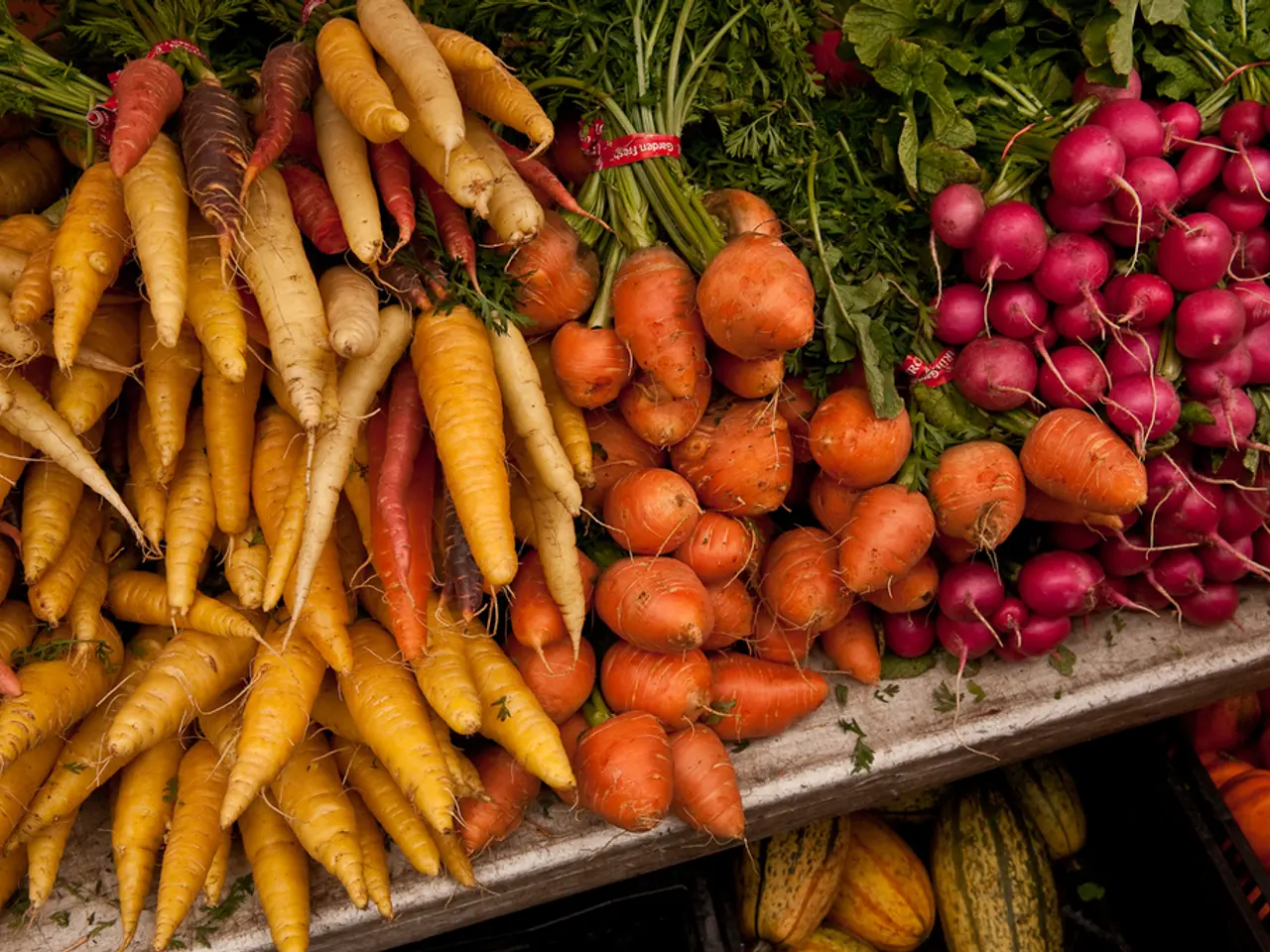Tips for initiating a home vegetable garden for novices
Starting Your Own Vegetable Garden: A Beginner's Guide
Are you ready to become a green thumb? Vegetable gardening can bring numerous benefits, from health and taste to cost savings, enjoyment, and mental and spiritual well-being. Here's a guide to help you get started.
Choosing the Right Vegetables
Start with easy-to-grow, reliable vegetables such as leafy greens (lettuce, kale, Swiss chard), root vegetables (radishes, carrots), and some fruiting crops like cherry tomatoes, zucchini, and peppers. Herbs like basil, rosemary, and oregano are also beginner-friendly and help repel pests. For shaded areas, consider planting lettuce, parsley, and mint [1].
Finding the Perfect Location
Pick a spot that receives at least six hours of direct sunlight daily. Even small spaces work well with raised beds or containers. Ensure good drainage and proximity for regular care. Group plants logically by type and height to avoid shading smaller plants [1][5].
Preparing the Soil
Start with healthy, compost-rich soil. Test your soil’s texture and nutrient level and amend it with organic matter or fertilizers as needed. Avoid fresh manure as it can burn plants. Mulching with straw, shredded leaves, or newspaper helps retain moisture, suppress weeds, and regulate soil temperature [2][3][5].
Managing Weather
Plant according to your climate and growing season (warm vs. cool season crops). Use a greenhouse or start seeds indoors if your local weather shortens the growing season. Protect young plants from extreme conditions by hardening off before transplanting outdoors, and providing shade or frost protection as required [1][4][5].
Dealing with Pests
Incorporate companion plants like marigolds to deter unwanted insects naturally. Regularly inspect plants for damage and use organic pest control methods when needed. Starting with sterile soil and clean equipment helps prevent disease and pests [1][4].
Common Mistakes to Avoid
- Overwatering: water deeply but less often, preferably early in the morning. Check soil moisture before watering [5].
- Ignoring plant spacing can cause crowding and poor growth; follow seed packet instructions for spacing and depth [1][5].
- Neglecting consistent care like weeding, mulching, and fertilizing reduces yield and plant health [3].
- Trying to grow too many or complicated crops at once can overwhelm a beginner; start small with a few favorite vegetables and expand gradually [1].
Encouraging Good Bugs and Controlling Pests
Good bugs like bees, butterflies, ladybugs, and praying mantids should be encouraged in the garden to fight off pests. Regular attention is required to prevent snails and pests from destroying seedlings. Pests can be controlled naturally, using methods like netting, snail traps, and hand removal [1][4].
Special Considerations for Different Soil Types
Raised garden beds can improve water retention in sandy soil and drainage in clay soil, but they may require additional bags of potting soil and compost. Gypsum can be added to clay soil to break down its heavy structure [3].
Involving Children in Gardening
Parents can involve children in pest management by having them hunt for bugs and rewarding them for finds. Herbs like parsley, mint, chives, and oregano are suitable for beginners and can boost the flavors in home-cooked meals [5].
Advanced Techniques
For larger gardens, consider using a drip irrigation system to water plants directly into the soil and prevent leaves from suffering fungal diseases. Potato plants should be covered with a cloth if the temperature is expected to drop to zero degrees or below at night to prevent frost burn [4].
Following these guidelines helps beginners establish a productive, manageable vegetable garden that grows skills along with plants [1][2][3][5]. Happy gardening!
[1] Gardening Know How. (2021). Vegetable Gardening for Beginners. Retrieved from https://www.gardeningknowhow.com/edible/vegetables/vgen/vegetable-gardening-for-beginners.htm
[2] The Spruce. (2021). How to Prepare Soil for a Vegetable Garden. Retrieved from https://www.thespruce.com/how-to-prepare-soil-for-a-vegetable-garden-1402486
[3] The Old Farmer's Almanac. (2021). Vegetable Gardening for Beginners. Retrieved from https://www.almanac.com/gardening/vegetable-gardening-beginners
[4] BBC Gardeners' World. (2021). Vegetable Gardening for Beginners. Retrieved from https://www.bbc.co.uk/gardening/advice/vegetables/vegetable_gardening_for_beginners
[5] Gardener's World. (2021). How to Start a Vegetable Garden. Retrieved from https://www.gardenersworld.com/how-to/grow-your-own/how-to-start-a-vegetable-garden/
Implementing home-and-garden strategies like gardening can enrich your lifestyle, adding pleasure and tranquility to your daily routine. To make the most of your vegetable garden, consider growing herbs and vegetables that are suitable for beginners, such as lettuce, kale, radishes, cherry tomatoes, and basil [1]. Give careful attention to where you place your garden, ensuring that it receives at least six hours of direct sunlight daily and benefits from good drainage [1][5].





